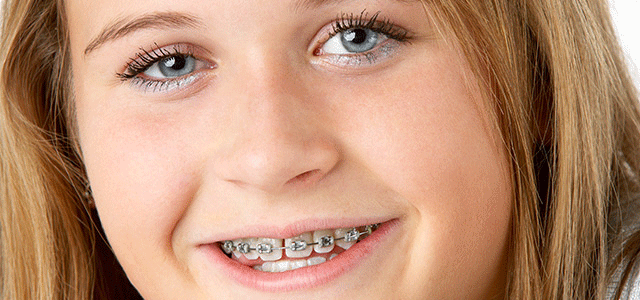
If you're the parent of a young child, you've probably noticed lots of shiny, colorful mouths filled with braces at events you attend with your pre-teen children.
And, if you wore braces yourself as a teenager, you might be wondering why, in fact, they are wearing braces that young.
The reason is because today, advances in orthodontics and dentistry have taught us that in many cases it's best to apply orthodontic treatment in two phases: first, as a child's permanent teeth begin to erupt, and again later once the last primary tooth has been lost.
The big question, then, is when to start, and what comes next?
Things Begin around Age Seven
This age range is important because research demonstrates identifying and correcting problems is more effective after the arrival of a child's first four permanent molars and first four central incisors – usually around age seven.
So, once this milestone has been reached, the goal of the initial consultation is to determine whether or not your child could benefit from a two-phase approach to braces, or whether they'll need braces at all.
What to Expect at Your First Appointment
A lot tends to happen in a first consultation, so you and your child should expect to spend at least a half hour in the office that day.
The idea is to be as thorough as possible, so your orthodontist will be asking a lot of questions of both you and your child, discussing finances with you, and taking digital X-rays and photographic images of your child while in the office.
X-rays provide a structural view your child's head, mouth and jaw, and photographs serve as good tools to guide the aesthetic side of orthodontics. After all, all those changes on the inside of one's mouth affect the outside of the face as well.
What are the benefits of early treatment if two-phase orthodontics is recommended?
- One major advantage to two-phase orthodontic treatment is addressing jaw development concerns. Because children are growing a lot at this point in their lives, early treatment can be implemented to literally “guide” the development of a child's jaw, so it grows into proper alignment. Doing so early can prevent issues down the line that may even require surgery to correct.
- Since overcrowding contributes to crooked teeth, proactively managing child's teeth can allow for necessary extractions in the teen years. It is very possible to avoid extractions later in life if a child's mouth is proactively managed when younger.
- By addressing dental issues that may result in teasing among peers, two-phase treatment can eliminate social difficulties that might disrupt a child's self-esteem early in life. Since orthodontics is largely seen outside of the professional circuit as an aesthetic life-event, it makes sense to address particularly thorny concerns early rather than later.
Again, it's important to remember that two-phase orthodontic treatment isn't something every child requires. However, the American Association of Orthodontists does have your child's best interest in mind in suggesting a consultation at the age of seven.
If you're not familiar with recommended orthodontists in your area, be sure to ask your family dentist for recommendations, so you and your child are set up and ready to go when the time comes.
